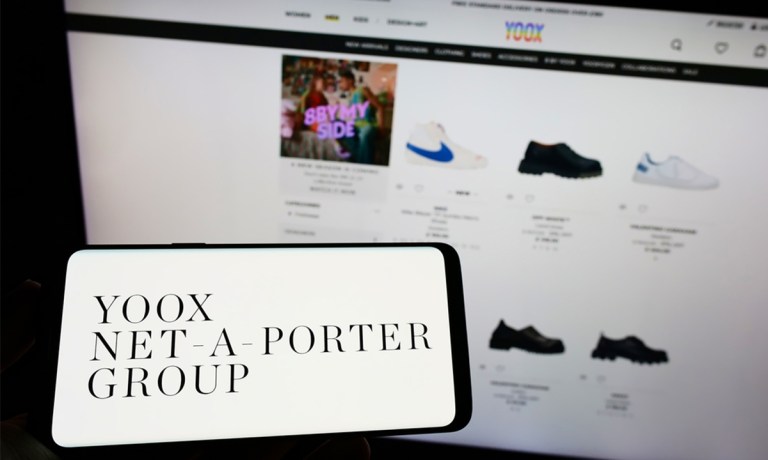
The luxury goods market is witnessing a notable trend toward strategic partnerships. Rather than retreating in the face of challenges, industry players are doubling down on collaboration to fortify their positions.
This week, Mytheresa announced its acquisition of YNAP from Richemont, with the goal of creating a leading global digital luxury group. This move will combine Mytheresa with YNAP’s renowned brands, including Net-A-Porter and Mr Porter, enhancing the luxury offerings available to high-end consumers. The integration aims to leverage the strengths of both companies, merging their unique brand propositions and operational efficiencies while maintaining distinct identities.
Simultaneously, the launch of the Authentic Luxury Group (ALG) by Authentic Brands Group and Saks Global represents another significant collaboration. This joint venture seeks to redefine luxury across multiple sectors, from fashion to hospitality, by leveraging each company’s capabilities to create more compelling offerings for consumers. The partnership also involves a minority investment from Amazon in Saks Global following the latter’s acquisition of Neiman Marcus Group.
In a market facing projections for slower growth — consider Louis Vitton’s decline in China, which reflects changing consumer preferences — particularly in key regions like the U.S. and China, these partnerships are not merely opportunistic; they are essential strategies for navigating an increasingly complex economic landscape.
Retail analysts note such collaborations can lead to operational efficiencies, enabling luxury brands to streamline back-end functions and reach a broader audience. By sharing resources and insights, companies like Mytheresa and Authentic Brands Group are positioning themselves to thrive amid ongoing market challenges, underscoring the critical role of innovation and adaptability in the luxury sector’s future.
In an interview with PYMNTS, Amanda Lai, a retail analyst and director for consultancy McMillanDoolittle, said given the global luxury market’s forecast for slower growth, particularly in the U.S. and China, luxury brands are increasingly turning to partnerships and acquisitions to remain competitive and drive growth.
“Mytheresa’s acquisition of Yoox Net-a-Porter is a prime example of how companies are partnering to create operational efficiencies, scale operations and expand their reach to multiple segments of luxury consumers,” Lai said. “The combined entity can likely reduce costs by consolidating many of its back-end business functions, such as legal, IT and human resources while leveraging its multiple brands — MyTheresa, Net-A-Porter, and Mr. Porter — to reach different high-end consumers.”
Lai said the collaboration between Authentic Brands Group and Saks Global also showcases how strategic partnerships can help luxury brands expand their digital capabilities and leverage the power of their platform to elevate an entire brand portfolio.
“This partnership builds on their prior licensing agreement, which allowed both brands to experiment with lower risk, providing valuable insights into the luxury consumer while minimizing the upfront investment,” she said.
“This new partnership is set to capitalize on those learnings and help the brands scale more effectively across the luxury landscape and digital channels,” Lai added. “By combining expertise and resources, these partnerships enable the companies to jointly mitigate risks, share costs and respond more nimbly to changes in the luxury landscape.”
Meanwhile, Sudip Mazumder, senior vice president, retail industry lead, North America at digital consultancy Publicis Sapient, told PYMNTS the trend of partnerships in the luxury goods market is a “promising development” for the industry.
“These collaborations are beneficial for several reasons,” he said, “like helping luxury brands reach a broader audience by tapping into new markets through popular online retailers, enhancing the customer experience with personalized and convenient shopping options, and strengthening brand image by associating with complementary brands or influencers. Partnerships allow for shared resources, such as marketing efforts and distribution channels, which can lead to cost savings and improved efficiency.
“From the Authentic/Saks platform perspective, this helps them fill a critical void of having a global marketplace for luxury consumers, which can provide consumers with more choices than they currently have,” he added. “Overall, these partnerships reflect a proactive approach by luxury brands to adapt to evolving consumer preferences and explore new growth opportunities.”
Building on this perspective, Neil Saunders, managing director, retail, at research firm GlobalData, told PYMNTS the luxury sector is experiencing significant activity and consolidation due to increasing challenges, particularly as growth slows in key markets like China.
“Growth is far slower across the globe, including in key markets like China, and this has left many luxury brands and firms scrambling to find growth through initiatives like partnerships or mergers,” Saunders said. “Whether these are successful remains to be seen. Some are based on sound reasoning, others seem to be a bit of a gamble that may not pay off.”